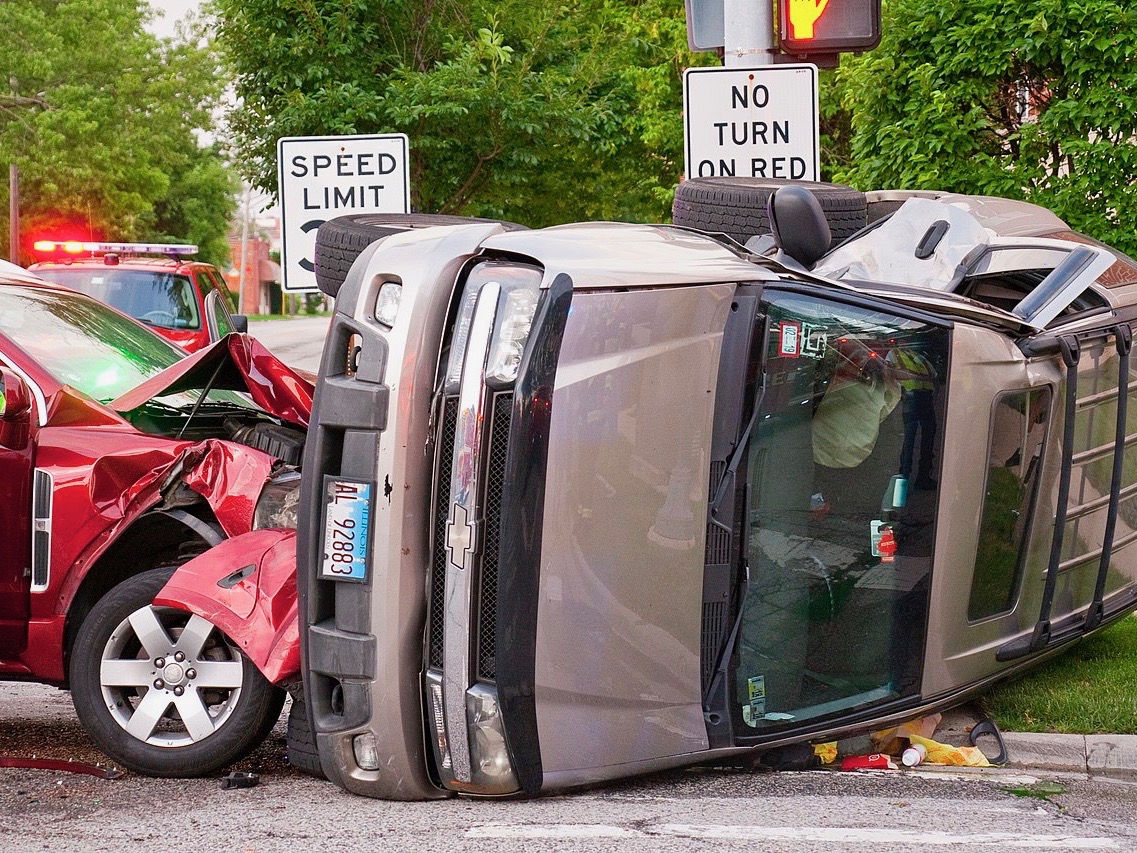Car crashes cost Illinois $3.8B a year
ILEPI study calls for ‘smart investments’ in infrastructure
A new ILEPI study calls for the state to address traffic accidents by improving intersections and roadway exits with better infrastructure. (Wikimedia Commons/Charles Edward Miller)
By Ted Cox
A new study finds Illinoisans spend $3.8 billion a year as a consequence of car crashes, and it calls on the state to make “smart investments” in infrastructure to minimize the damage.
“Roadway Safety in Illinois: Examining the Needs, Economic Costs, and Potential Improvements” was released Tuesday by the Illinois Economic Policy Institute. It finds the distressing trend that Illinois traffic deaths have begun to creep up after dropping below 1,000 a year for the better part of a decade.
The study cites Illinois Department of Transportation statistics showing that 1,248 people died in Illinois traffic accidents in 2007. That dropped to a low of 911 in 2009, and the annual total remained below 1,000 for half the decade until rising to 1,078 in 2016. Since then, the state has topped 1,000 road deaths both the last two years.
Study author Mary Craighead, ILEPI’s transportation analyst, credited increased seatbelt use and improved car design with bringing down traffic deaths, but added that might have reached a peak and that the trend was more recently moving in the opposite direction.
“While the long-term trends in road safety have generally been positive, the recent increase in fatalities is a warning that we can and must do more,” Craighead said in a news release on the report.
According to the study, Illinois had 324,400 traffic accidents in 2016, resulting in 66,703 injuries on top of the 1,078 deaths. It cited that car crashes are the leading cause of death for those between the ages of 8 and 24.
It estimates the overall cost in medical treatment, emergency medical services, and lost productivity both to individuals and to employers at $3.8 billion a year.
“The overall cost data on Illinois car crashes mirrors what we have seen in prior examinations of bridges, rail systems, and other vital infrastructure,” Craighead said. “Road-safety incidents ripple out to produce much broader effects on the economy, and the challenge is to minimize those events.”
The study finds that “roadway departures and intersection-related crashes produce the most fatal and serious-injury crashes in Illinois and are most effectively addressed through engineering improvements.” It cites that “78 percent of roadway-departure fatalities and serious injuries in Illinois were on undivided roadways or divided roadways without median barriers, which could be addressed by adding rumble strips and median barriers,” and that “68 percent of fatalities and serious injuries at intersection-related crashes involved two vehicles, which could be improved by eliminating certain vehicle interactions by installing roundabouts, J-turns, and median U-turns.”
Adding that “other treatments like the paving of shoulders, redesigning curves, or constructing grade separation at major intersections and railroads can help Illinois address roadway safety issues,” it called for the state to address these issues as part of a major capital spending bill on infrastructure, a top priority of Gov. J.B. Pritzker, who mentioned it in his inaugural address.
“Modernizing Illinois’s transportation infrastructure isn’t just about repairs that only grow more expensive with time," Craighead concluded. “It’s about making smart investments that save lives and protect our economy from the costly impact of severe roadway accidents.”
IDOT, meanwhile, has made distracted driving an issue, although it’s also been criticized for distracting drivers itself with its so-called dynamic message signs on state highways.
Chicago transportation expert John Greenfield has listed IDOT’s playful signs including those reading: “No Speeding, No Texting, No Ketchup,” “Cars have bumpers, bikers have bones. Share the road,” “Han says Solo down. Obey speed limits,” and “Get your head out of your apps. Put the phone down.”
That last one is especially appropriate, as drivers have been shooting photos of the signs with their phones while driving, which of course is not considered safe.
IDOT has discouraged that practice, so it’s no accident that when it recently opened a contest to the public for writing new sign messages, the top winner announced Monday came from Leanne Harbour: “Put down the phone and no one gets hurt.”
It’s worth noting that, after 2016, Illinois traffic deaths rose again to 1,089 in 2017, but declined slightly last year to 1,032. As of Tuesday, 178 people had died on Illinois roads this year, down from 250 at the same point last year, so the state may have reversed the trend. Now, according to ILEPI, it needs to minimize traffic deaths by improving roads and shoulder paving and redesigning curves and constructing grade separation at major intersections and railroads as well.

